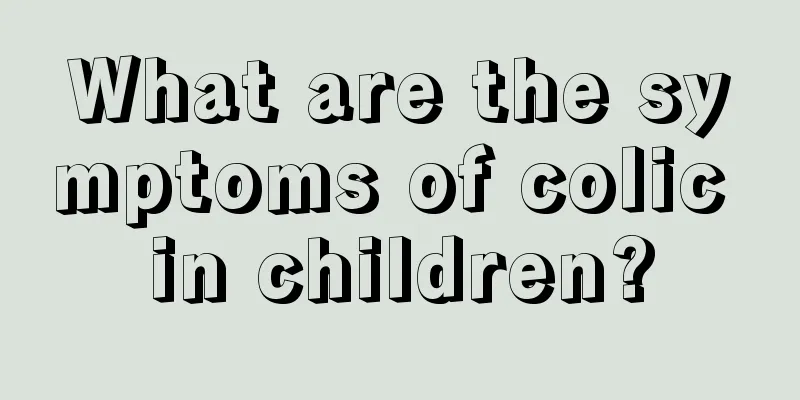Does your child have ingrown feet?

|
It is a very common phenomenon for children to have clubfoot. However, clubfoot is usually caused by congenital developmental abnormalities. There is currently no medicine that can treat it. The only way to help children correct it is through correction methods. However, it is best to take the child to the hospital for relevant examinations and treat the child under the guidance of a doctor. Never go to some unqualified hospitals to avoid delaying the child's condition. Clubfoot (foot varus) is a developmental deformity caused by developmental disorders of the tendons and ligaments of the foot, which causes the ankle joint to twist inward into a horseshoe shape. It can occur on one or both feet, but most babies affected are boys. It is estimated that approximately 1 in every 1,000 babies born worldwide suffers from clubfoot, and more than 100,000 babies are born with congenital clubfoot each year, 80% of whom are in developing countries. Many parents neglect their baby's treatment, thinking that everything will be normal after a while, not knowing that this will only make the baby's condition worse. Do not underestimate the dangers of baby's inversion of feet. Failure to treat inversion of the foot Many babies with clubfoot develop chronic clubfoot due to lack of treatment or improper treatment, which eventually leads to physical disability and imposes great physical, psychological and economic burdens on the children, their parents and society. Although surgical treatment can improve the appearance of the foot, the foot will still be stiff, weak, and often painful. After puberty, the pain worsens and lameness develops. If a newborn baby has clubfoot, parents must not be careless and must take the child to a professional hospital for diagnosis and treatment in time to ensure early detection, diagnosis and treatment. If the best early treatment opportunity can be grasped, the child has a great hope of being cured. How to tell if a baby has clubfoot 1. After birth, one or both feet have varying degrees of inversion and ptosis deformity. The front part of the foot is adducted and drooped, wrinkles appear on the plantar surface of the foot, and there is elastic resistance to dorsiflexion and abduction. 2. After children learn to walk, their gait becomes unstable, they limp, and they touch the ground with the outer edge of their feet, and the deformity gradually worsens. For those who delay treatment, the deformity is more obvious, the front part of the foot turns backward and inward, calluses (commonly known as calluses) and bursae are produced on the weight-bearing part of the dorsum of the foot, and the internal rotation of the tibia is aggravated. 3. It is generally divided into loose type and rigid type. The loose type has milder deformity, smaller feet, loose skin and tendons, and is easy to correct with manipulation. The rigid type deformity is severe, with a deep transverse skin fold visible on the plantar surface, a small calcaneus, a thin and tight Achilles tendon, and severe equinovarus and adduction deformities that are difficult to correct with manipulation. 4. In newborns with mild inversion of the foot, the adduction and inversion of the front part of the foot are not obvious and are often easily overlooked. A simple diagnostic method is to hold the front of the foot with your hands and move it in all directions. If there is elastic resistance when the foot is everted and dorsiflexed, further examination and diagnosis should be conducted to allow for early manual treatment. In the late stage, the foot becomes inverted and drooped, and the deformity becomes more obvious. Generally, X-ray examination is not required to confirm the diagnosis, but it is important to determine the degree of inversion and equinus and to evaluate the therapeutic effect. Shoes that are too big can easily cause inversion of the foot The bones of children's feet are not fully developed and shaped. Unlike adults' feet, children's feet are mainly supported by cartilage. This fragility makes it very important for children to wear shoes safely. Therefore, a pair of suitable shoes is very important. If children wear improper shoes for a long time, it may cause bone deformities such as flat feet and inversion of the foot. Children's feet grow quickly, so many parents like to buy larger sizes for their children for convenience. This is not advisable. If children wear ill-fitting shoes, their feet will not be able to stand steadily in the shoes and they will sway from side to side when walking. If this continues for a long time, it will affect their walking posture and the growth and development of their feet, causing deformities such as inversion or valgus of the foot. Of course, if the shoes are too small, it will also affect the development of children's foot muscles and ligaments. Some parents always want to dress their children up to look better, and dress them in overly adult styles. The most common phenomenon is children wearing high heels and shoes that are too flat. These shoes usually cannot provide effective support and protection for the feet. Shoes with too flat soles not only increase arch fatigue, but also lead to stunted bone development and chronic heel pain. These problems are usually acute and can affect a child for life. Prone to injury and infection A child's foot is not a smaller version of an adult's foot. Most of their foot bones are cartilage that is in the process of calcification. The bone tissue is highly elastic and easily deformed. In addition, the keratinized layer of the foot's epidermis is thin and the muscles are high in water, making it very easy to become infected due to injury. Accidents are likely to happen Large shoes do not fit children's feet well and can easily cause accidents. Children are usually restless and like to run around. Not only are their shoes easy to slip off, they may also trip. Indirect brain vibration The soles of infants and young children's feet are distributed with blood vessels and nerves related to the body's internal organs, as well as many acupoints. Therefore, the feet are as important to the body as roots are to trees. The arches of infants and young children are in the development stage. Improperly designed shoes cannot cushion the vibrations generated by the ground when walking, which can damage the arches, ankles, knees, waist, and spine, and can also cause indirect vibrations to the brain. |
<<: What should I do if my child always likes to watch TV?
>>: Things to pay attention to when sending your 2-year-old baby to daycare
Recommend
What should you do if your child is frightened?
If a child is frightened, parents must handle the...
Why do children have difficulty breathing through their noses?
Some children often have difficulty breathing due...
How old is the baby better to supplement calcium
The health of every baby is of greatest concern t...
How many months does the baby crawl?
Whether babies can crawl or not, this is a topic ...
2 month old baby diarrhea
With the continuous improvement of modernization,...
Does camphor have any effect on babies?
The physical health of the baby is of great conce...
How to correct a child's head tilt
Children are treasures in the eyes of their paren...
What is the height and weight standard for a six-month-old baby?
As newborn babies grow up day by day, don't t...
What should I do if my child has chronic nephritis?
Although kidney disease and stomach disease are n...
What are some recipes for children to grow taller?
The growth of children is always a concern for pa...
What is the reason why babies have milk curds?
The feces of breastfeeding babies contain small w...
What causes children's eye bags to swell
Children's eyes are tissues that are very pro...
What should I do if my baby has a fever at seven months old?
Some babies have fever, so they should pay attent...
How to improve children's memory
Every parent hopes that their baby is not only he...
What should we do about chronic bronchopneumonia in children?
Children will always develop one disease or anoth...









